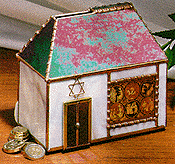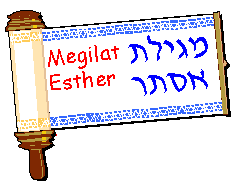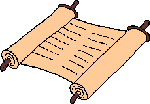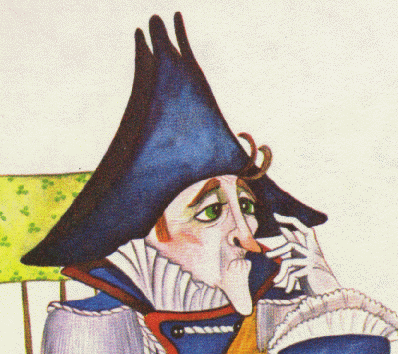
MORE PROVOCATIVE
QUESTIONS & ANSWERS

 and gifts to the Poor." It is typical of Judaism that, even during a holiday of revelry, we remember others, especially those less fortunate than ourselves. It is customary to send two gifts to at least one friend and to give a singl gift to at least two poor people. Even the poorest Jew is expected to share with others. Thus we learn that Tzedakah, at all times and in all places, is a religious duty.
and gifts to the Poor." It is typical of Judaism that, even during a holiday of revelry, we remember others, especially those less fortunate than ourselves. It is customary to send two gifts to at least one friend and to give a singl gift to at least two poor people. Even the poorest Jew is expected to share with others. Thus we learn that Tzedakah, at all times and in all places, is a religious duty. Yes, after a visit to Palestine the great Jewish leader Henrietta Szold decide to form a Zionist organization for women. She envisioned this group working for the health of women and children in what was to become the modern State of Israel.
Yes, after a visit to Palestine the great Jewish leader Henrietta Szold decide to form a Zionist organization for women. She envisioned this group working for the health of women and children in what was to become the modern State of Israel. The founding meeting was held at Congregation Eman-u-El of New York. The date -- Purim, 1912. The women constituted themselves as the Hadassah chapter of the Daughters of Zion. Eventually the name would become simply: Hadassah. The Biblical woman, who centuries before had delivered her people, thus gave her name to a new generation of women who would seek to emulate her noble example.
The founding meeting was held at Congregation Eman-u-El of New York. The date -- Purim, 1912. The women constituted themselves as the Hadassah chapter of the Daughters of Zion. Eventually the name would become simply: Hadassah. The Biblical woman, who centuries before had delivered her people, thus gave her name to a new generation of women who would seek to emulate her noble example. The story of Purim is contained in the Scroll of Esther, Megillat Esther. Ther are four other Biblical megillot, each read in the synagogue on a holiday compatible with its theme. Esther is read on Purim, Ruth on Shavuot, Lamentations on Tisha B'av, Ecclesiastes on Sukkot, and Song of Songs on Pesach. Only in the case of Purim, however, does the megillah relate the holiday's basic story.
The story of Purim is contained in the Scroll of Esther, Megillat Esther. Ther are four other Biblical megillot, each read in the synagogue on a holiday compatible with its theme. Esther is read on Purim, Ruth on Shavuot, Lamentations on Tisha B'av, Ecclesiastes on Sukkot, and Song of Songs on Pesach. Only in the case of Purim, however, does the megillah relate the holiday's basic story. A third hypothesis is perhaps the most interesting. The Ba'bylonians had a New Year celebration when they believed their gods Marduk and Ishtar cast lots to determine each individual's fate. Then, say these scholars, the elements of this pagan festival were borrowed, rewritten, and transformed into Purim, with Marduk becoming Mordechai, Ishtar becoming Esther, and lots (purim) playing a pivotal role in the plot.
A third hypothesis is perhaps the most interesting. The Ba'bylonians had a New Year celebration when they believed their gods Marduk and Ishtar cast lots to determine each individual's fate. Then, say these scholars, the elements of this pagan festival were borrowed, rewritten, and transformed into Purim, with Marduk becoming Mordechai, Ishtar becoming Esther, and lots (purim) playing a pivotal role in the plot. The elevation of Purim to a major holiday in the eyes of the Jewish people was a result of the Jewish historical experience. Over the centuries, Haman became the embodiment of every anti-Semite in every land where Jews were oppressed. Jewish communities throughout the world, when delivered from tragedy, often wrote their own megillot and celebrated local Purims. Even the enemeis of the Jews recognized their identification with Haman. In an eerie prophecy, in 1944, Adolf Hitler declared that, if the Nazis lost the war, the Jews would celebrate a second Purim.
The elevation of Purim to a major holiday in the eyes of the Jewish people was a result of the Jewish historical experience. Over the centuries, Haman became the embodiment of every anti-Semite in every land where Jews were oppressed. Jewish communities throughout the world, when delivered from tragedy, often wrote their own megillot and celebrated local Purims. Even the enemeis of the Jews recognized their identification with Haman. In an eerie prophecy, in 1944, Adolf Hitler declared that, if the Nazis lost the war, the Jews would celebrate a second Purim.